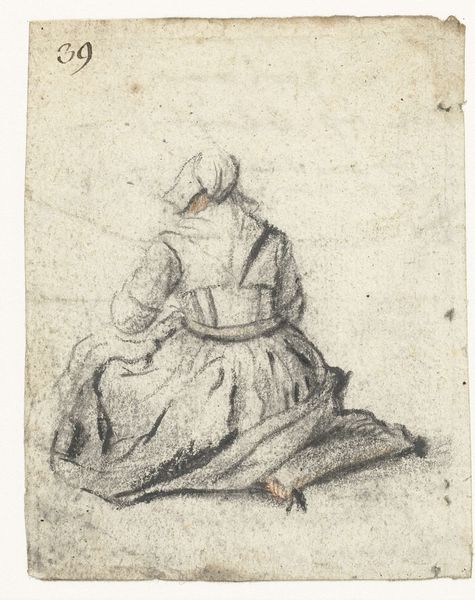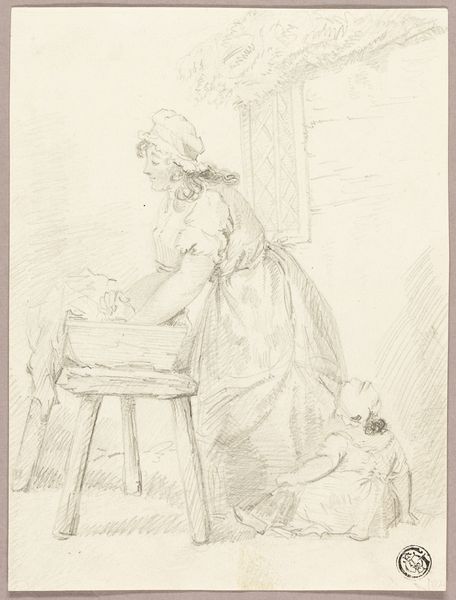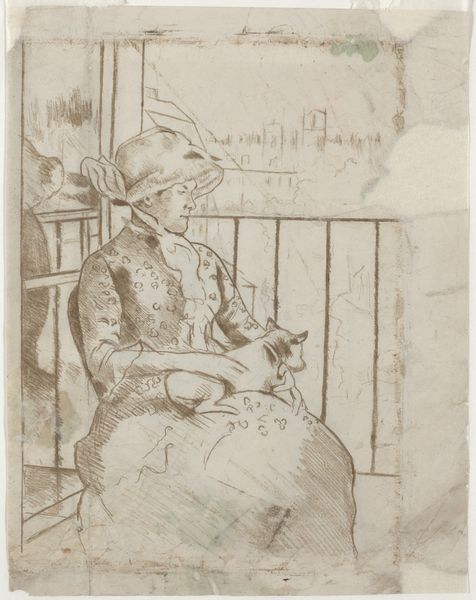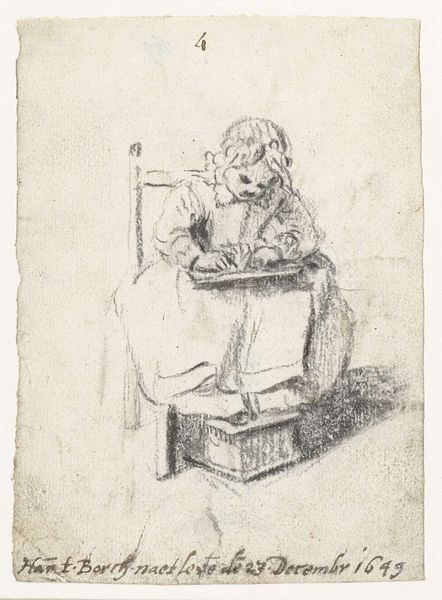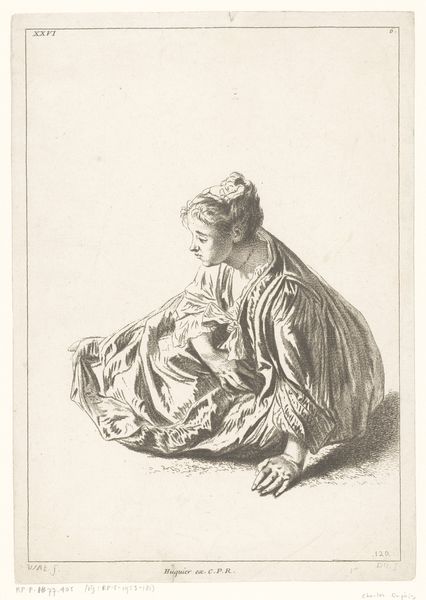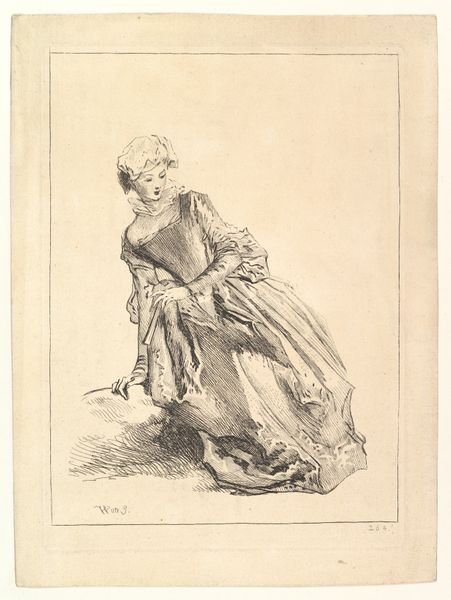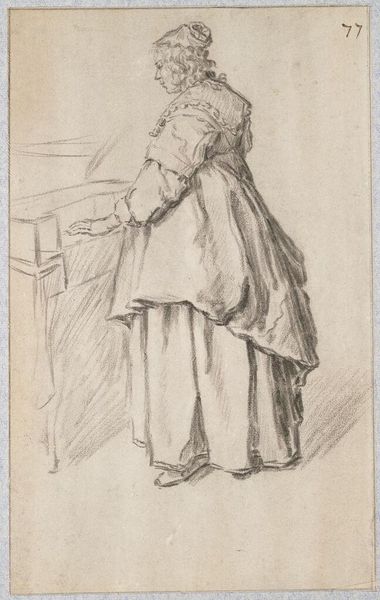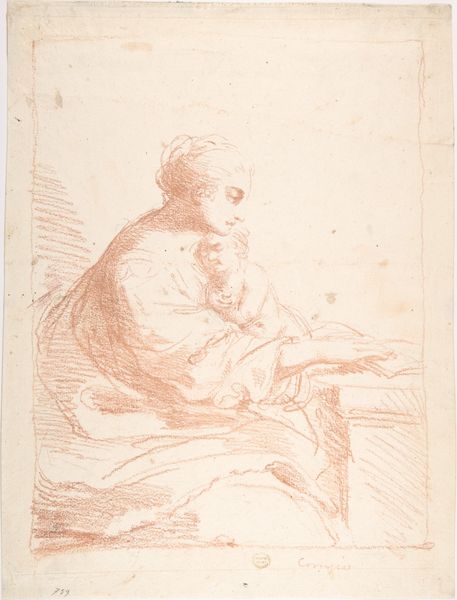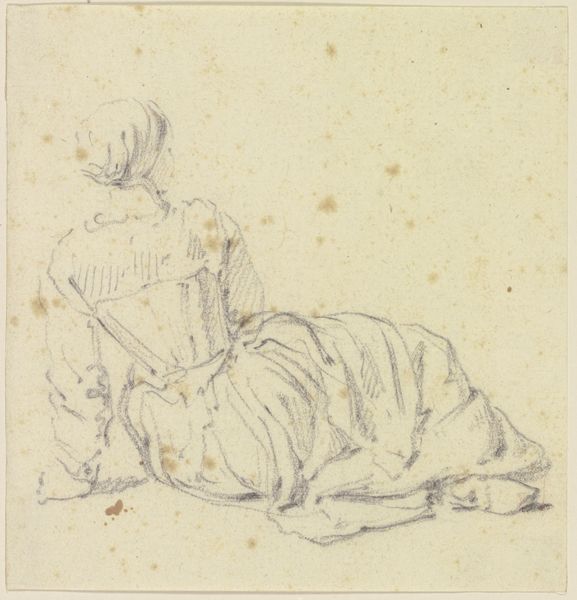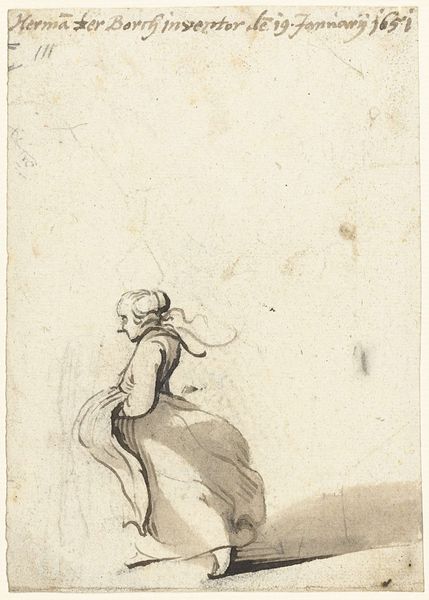
Zittend kind, tekenend of schrijvend, driekwart naar rechts Possibly 1650 - 1651
0:00
0:00
harmenterborch
Rijksmuseum
drawing, pencil
#
portrait
#
drawing
#
dutch-golden-age
#
pen sketch
#
pencil sketch
#
figuration
#
pencil
#
genre-painting
Dimensions: height 122 mm, width 105 mm
Copyright: Rijks Museum: Open Domain
Curator: I'm struck by the sheer simplicity of this pencil sketch. It conveys a quiet intensity. Editor: Indeed. The Rijksmuseum houses this drawing entitled "Zittend kind, tekenend of schrijvend, driekwart naar rechts," or "Sitting Child, Drawing or Writing, Three-Quarters to the Right," created by Harmen ter Borch around 1650-1651. What resonates most is the artist's capacity to distill a complex cultural milieu through such humble means. Curator: It’s the mundanity, isn’t it? A young person absorbed in their studies. Ter Borch captures something universal here – the individual and their intellectual labor, and that work's ties to self-actualization for the individual, no matter what century they live in. I immediately think of feminist scholars connecting labor and artistic freedom. Editor: Note how the artist subtly draws us into a world governed by childhood and instruction through visual language. The headscarf and simple dress immediately position the child within a social hierarchy; these clothes signal a particular type of Protestant modesty. I am especially fascinated by how Ter Borch, despite only offering vague facial features, nonetheless imbued this figure with great personality. Curator: You're right, the ambiguity lends itself to broader interpretations. We can speculate about the child's social position, perhaps lower-middle class given her garments, and consider what access to education might have meant in Dutch society at this time. This wasn't necessarily a right afforded to all. Editor: We should also examine the symbolic resonance of writing and drawing in the 17th century. Consider the act of committing thoughts to paper—transforming something immaterial into something fixed, tangible. Here we witness that transition, the forging of one's legacy. The light is suggestive here. We are invited to be privy to this important moment, much like with an anointing. Curator: That’s a wonderful insight. Looking closer, I'm considering the constraints under which this artwork may have come to exist. It certainly is powerful to contemplate how many unnamed female figures contributed intellectually and creatively during that period without access to the tools or privileges granted to their male peers. Even in this modest piece, resistance to hegemonic paradigms is palpable. Editor: I agree. Despite its unassuming facade, Ter Borch's artwork teems with evocative potential and profound commentary. Curator: The image resonates long after the first glance. It pushes us to inquire into ourselves while remembering people such as her!
Comments
No comments
Be the first to comment and join the conversation on the ultimate creative platform.



